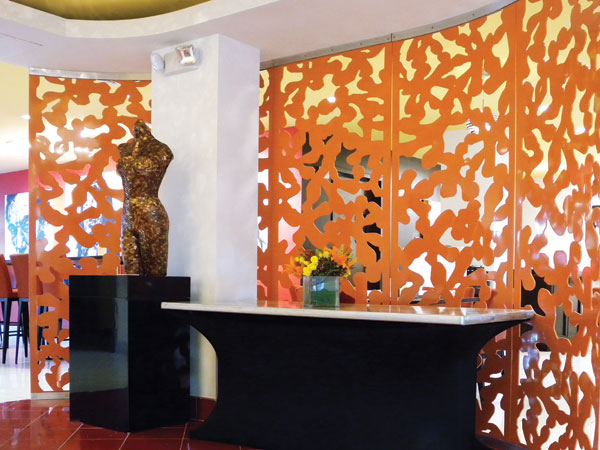Pattern Mapping for Lasting Design
Learning Objectives:
- Compare patterns on a pattern map.
- Explain how different characteristics of a pattern functionally and aesthetically impact the visual space.
- Select the openness factor and base material that will help to meet project objectives.
- Apply best practices to provide privacy, camouflage, shade, or secure railings with architectural panels with patterned openings.
Credits:
In its most basic definition, a pattern, as it defines a principle of art or architecture, is a repetition of an element (or elements) in a work. While the definition and regular use of patterns in architecture may be common knowledge to the design community, revealing the power of the pattern to highlight, hide, partition, and shade, while creating points of visual interest, may reposition the pattern as a powerful new tool in a designer's toolbox. Today, the pattern offers more to architecture and design than merely an aesthetic upgrade. The pattern is functional.
Recognizing and Responding to Patterns
The key to understanding how patterns can so successfully manipulate a person's experience in a space lies in understanding how people recognize and respond to patterns. Human beings are preprogrammed to recognize patterns, even without looking directly at them. The human eye sees the world with two distinct types of vision, often referred to as peripheral and central vision. Interestingly, these two different types of vision are directly tied to two different areas of the brain. Patterns are recognized by both types of vision and intrigue both parts of the brain.
Patterns are first detected in the peripheral vision. This is a person's ability to detect aspects of those surroundings without focusing on the particulars of his or her surroundings. This type of vision is tied to the same centers of the brain that are responsible for managing the body's fight or flight response. Experts credit this proclivity for pattern perception as a talent that was honed when human survival required recognizing threats, like a tiger in the nearby grass. Even though tigers no longer play a role in our daily lives, this heightened ability to perceive patterns persists.
Central vision has a unique attraction to patterns as well. In fact, it seems that the eye is drawn toward contrast and patterns and will focus on these elements before a solid color. Photographers and graphic designers often employ this rule of thumb and use contrast and pattern to highlight or camouflage aspects of a shot or subject.

Photo courtesy of Parasoleil
Use architectural panels with patterned openings to create stunning partitions, create shade, or camouflage unsightly equipment. Design: Studio Dela Rosa









